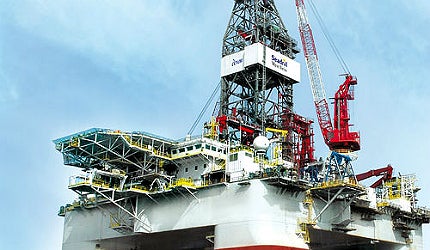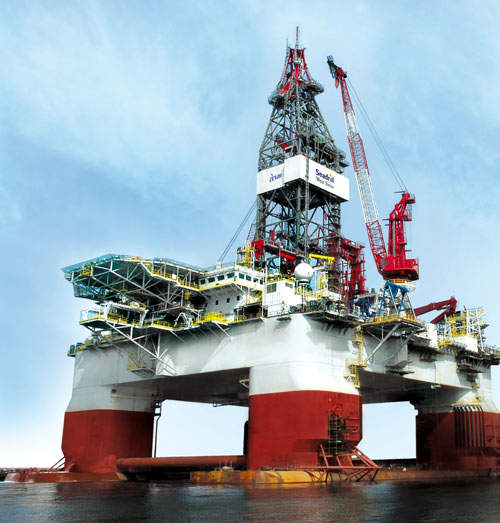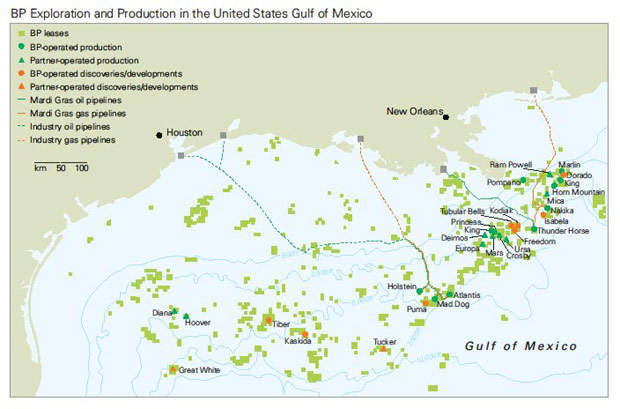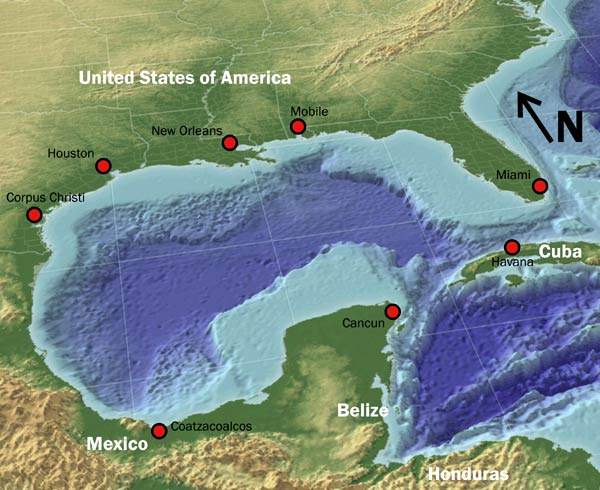
Kaskida is a field situated in block 292 in Keathley Canyon, in the Gulf of Mexico. It is 250 miles south-west of New Orleans. The field was discovered in 2006 in a water depth of 5,900ft.
The discovery is among the deepest in the Gulf of Mexico and is drilled to about 32,500ft. BP is the operator of the project, which is jointly owned by BP (70%) and Devon Energy (30%).
Kaskida is among the largest Paleogene discoveries, with more three billion boe stock tank oil in place (STOIP).
The project covers 51,800 acres, including nine blocks in the Keathley Canyon deepwater. It was acquired by the partners in a federal OCS lease sale in August 2003.
Discovery of the Gulf of Mexico-based prospect
Geological forms in the Gulf of Mexico became accessible to crude and oil companies in 2006. The Kaskida prospect was drilled to a depth of 32,500ft. About 800 net feet of hydrocarbons bearing sands were identified.
Discovery of the field in the deepwater posed a challenge to BP. The company has implemented advancement recovery technologies to maximise recovery rates.
The field was found in the middle of Keathley Canyon offshore area. The Paleogene rock formation in the Gulf of Mexico is generally characterised by older sediments with ultra deepwater areas, high temperatures, high pressure reservoirs and high sand content.
Use of Seadrill’s West Sirius semi-submersible rig
The appraisal activities for the well, located five miles to the west of the project field, started in 2008. In November 2009 it was announced that the appraisal well had confirmed oil in the Lower Tertiary reservoirs.
The well, located in block 291 of Keathley Canyon in 5,675ft of water, was drilled by the West Sirius semi-submersible rig. It was drilled to a depth of 32,500ft. BP planned to continue the appraisal activities on the well in 2010 and start well tests in 2011.
Appraisal of the eastside well was planned to be carried out in 2010. BP had to temporarily suspend field operations in Gulf of Mexico because of the oil spill at Macondo in 2010.
In October 2011 BP was authorised by Bureau of Safety and Environmental Enforcement (BSEE) to drill another appraisal well at the Kaskida field. It was the first permit for BP after the oil spill. BP commenced the drilling of the deep-water well in November 2011.
The well will be drilled to a depth of about 34,149m in 6,034ft deep water, using the semisubmersible West Sirius rig.
Drilling the Kaskida offshore field
The West Sirius rig, which is owned by Norway’s Seadrill Offshore, was built in 2008 at the Jurong Shipyard. Devon Energy signed a $690m contract with Seadrill in 2006 to use West Sirius for drilling in the Gulf of Mexico. West Sirius is a fifth-generation rig which can drill to 37,500ft.
BP and Devon’s ownership of Kaskida
Related project
Appaloosa Field, Gulf of Mexico, United States of America
The Appaloosa oilfield is located about 200km south-east of New Orleans in the Gulf of Mexico at a water depth of 2,500ft.
In 2006 BP owned 55%, Anadarko Petroleum owned 25% and Devon owned 20% of the project. In March 2008 Statoil was expected to acquire 25% from Anadarko Petroleum.
However, the remaining partners exercised their pre-emption rights. In 2008 BP’s share increased to 70% and Devon’s stake increased to 30%.
BP is engaged in operating eight major deep facilities, delivering 30% of Gulf of Mexico deepwater production. It delivers about 400,000boe.
Devon Energy owns one million acres in the Gulf of Mexico. About seven percent of its annual production comes from the area. Kaskida is Devon’s fourth major discovery in the Lower Tertiary area.
Lower Tertiary deepwater drilling prospects
Lower Tertiary refers to deepwater drilling in the depths of more than 15,000ft in the Gulf of Mexico. The formations date back to between 23 million years and 65 million years. Discoveries in the Lower Tertiary began in 2001 and 2002 in Alaminos Canyon and Walker Ridge, followed by Keathley Canyon.
The 12 prospects discovered in the area are Trident, Great White, Cascade, Chinook, St Malo, Tobago, Silvertip, Tiger, Jack, Stones, Gotcha and Kaskida. Chevron operates six, BHP and BP operate two each and Shell and Total operate one each.






